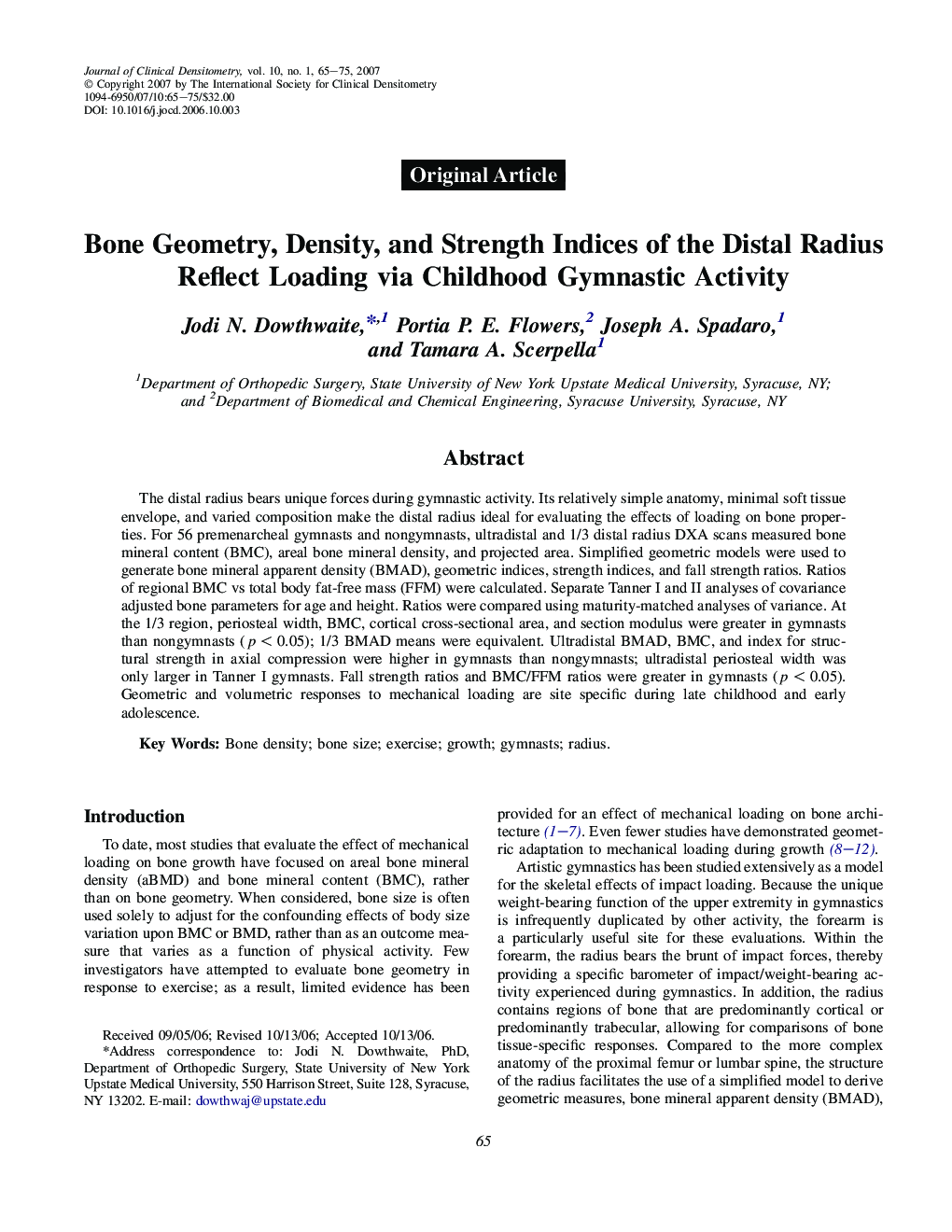| کد مقاله | کد نشریه | سال انتشار | مقاله انگلیسی | نسخه تمام متن |
|---|---|---|---|---|
| 3271965 | 1208283 | 2007 | 11 صفحه PDF | دانلود رایگان |
عنوان انگلیسی مقاله ISI
Bone Geometry, Density, and Strength Indices of the Distal Radius Reflect Loading via Childhood Gymnastic Activity
دانلود مقاله + سفارش ترجمه
دانلود مقاله ISI انگلیسی
رایگان برای ایرانیان
کلمات کلیدی
موضوعات مرتبط
علوم پزشکی و سلامت
پزشکی و دندانپزشکی
غدد درون ریز، دیابت و متابولیسم
پیش نمایش صفحه اول مقاله

چکیده انگلیسی
The distal radius bears unique forces during gymnastic activity. Its relatively simple anatomy, minimal soft tissue envelope, and varied composition make the distal radius ideal for evaluating the effects of loading on bone properties. For 56 premenarcheal gymnasts and nongymnasts, ultradistal and 1/3 distal radius DXA scans measured bone mineral content (BMC), areal bone mineral density, and projected area. Simplified geometric models were used to generate bone mineral apparent density (BMAD), geometric indices, strength indices, and fall strength ratios. Ratios of regional BMC vs total body fat-free mass (FFM) were calculated. Separate Tanner I and II analyses of covariance adjusted bone parameters for age and height. Ratios were compared using maturity-matched analyses of variance. At the 1/3 region, periosteal width, BMC, cortical cross-sectional area, and section modulus were greater in gymnasts than nongymnasts (p < 0.05); 1/3 BMAD means were equivalent. Ultradistal BMAD, BMC, and index for structural strength in axial compression were higher in gymnasts than nongymnasts; ultradistal periosteal width was only larger in Tanner I gymnasts. Fall strength ratios and BMC/FFM ratios were greater in gymnasts (p < 0.05). Geometric and volumetric responses to mechanical loading are site specific during late childhood and early adolescence.
ناشر
Database: Elsevier - ScienceDirect (ساینس دایرکت)
Journal: Journal of Clinical Densitometry - Volume 10, Issue 1, JanuaryâMarch 2007, Pages 65-75
Journal: Journal of Clinical Densitometry - Volume 10, Issue 1, JanuaryâMarch 2007, Pages 65-75
نویسندگان
Jodi N. Dowthwaite, Portia P.E. Flowers, Joseph A. Spadaro, Tamara A. Scerpella,